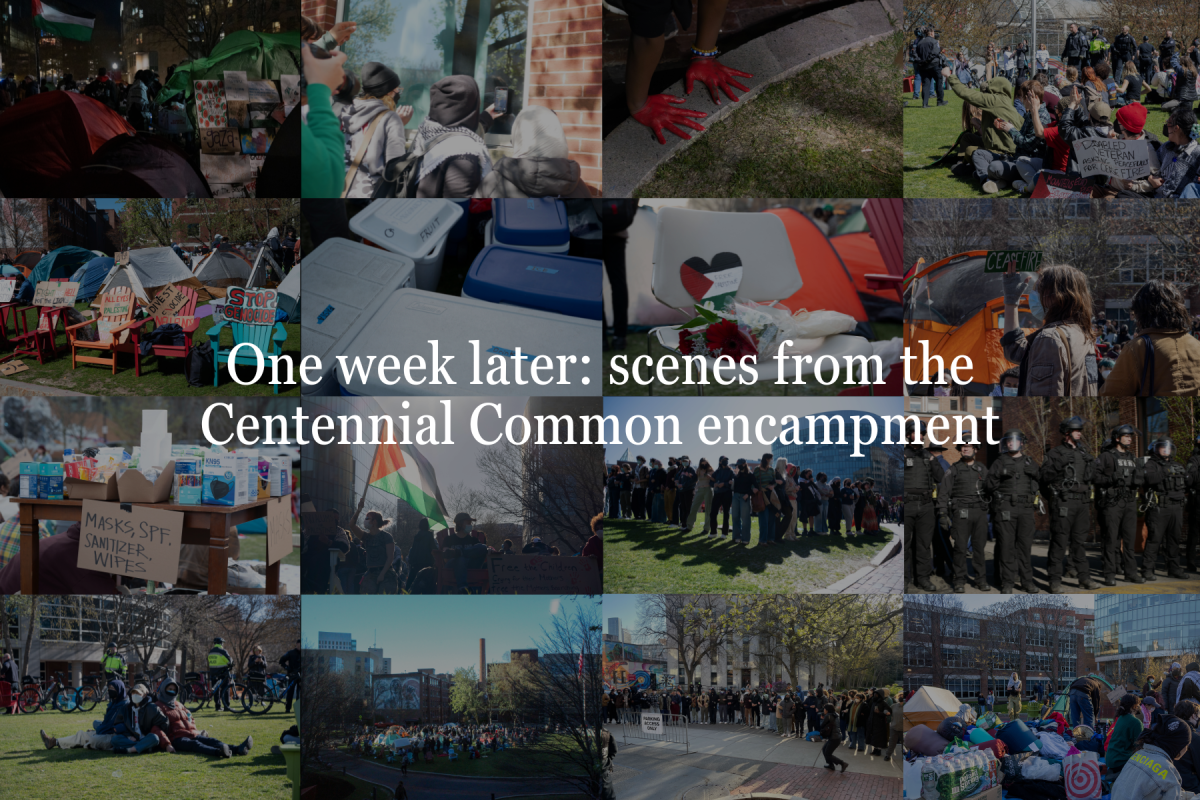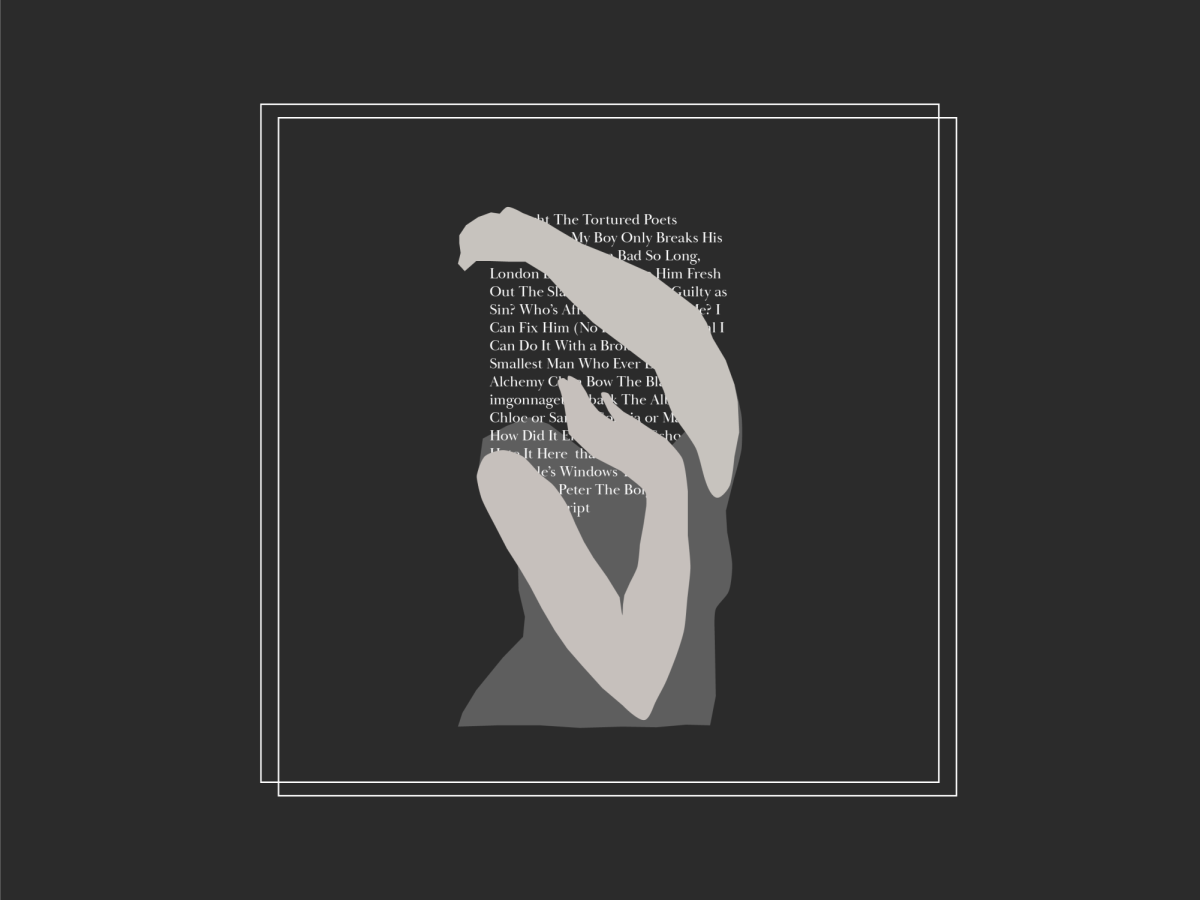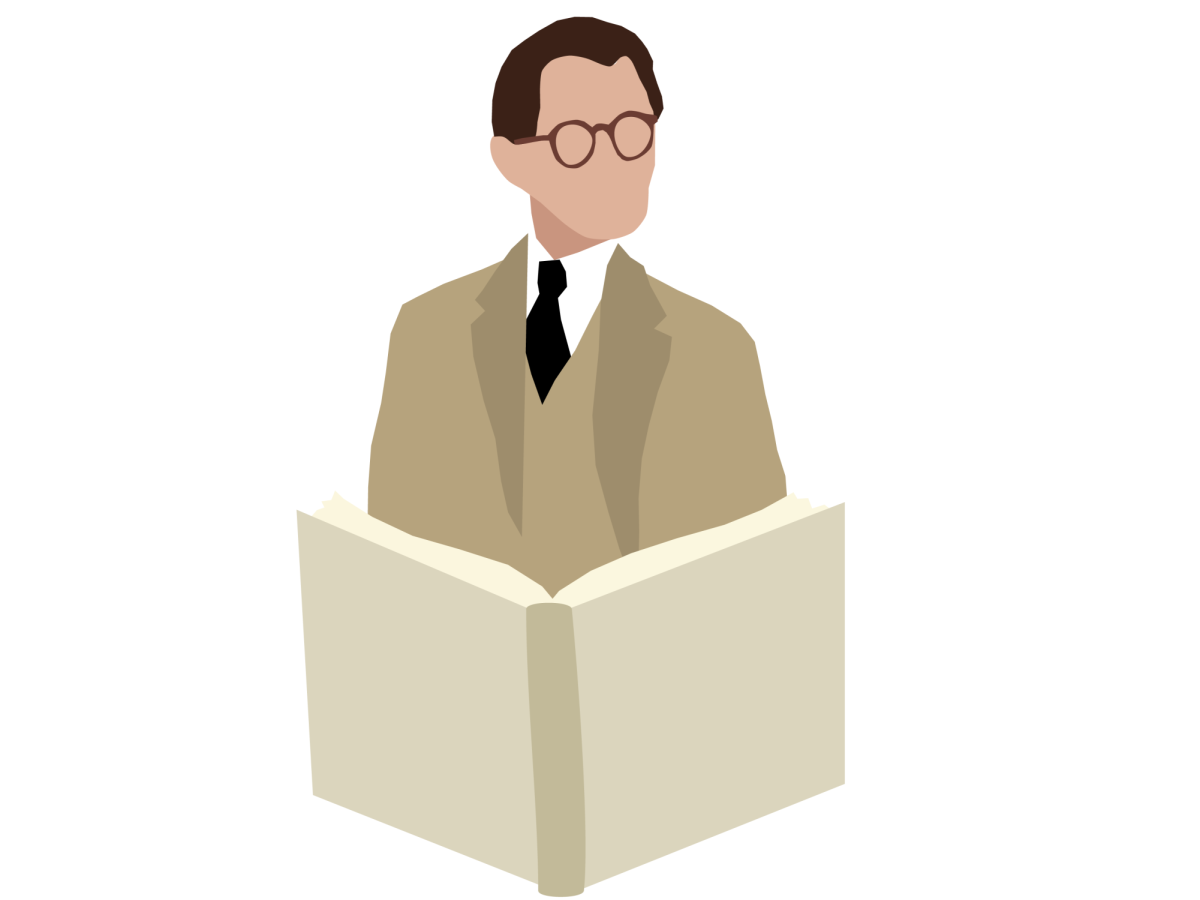By Stephanie Eisemann, News Correspondent

“Twenty-eight days … six hours … 42 minutes … 12 seconds. That is when the world will end.”
When an enormous rabbit with a deep distorted voice writes this in invisible ink on a white graphic T-shirt, one would assume the rest of that time will be intriguing to say the least.
Northeastern University Department of Theatre presented the second-ever stage adaption of “Donnie Darko” by Marcus Stern, at the Curry Student Center studio theatre from March 12 to 24. Matthew Gray, director and assistant professor of theatre, said the entire second week of its run was sold out – unusual for a Northeastern production.
“Donnie Darko” is about a young and troubled man dealing with fear, love and time travel. One night Donnie follows his hallucination, a giant rabbit named Frank, to the middle of a golf course, only to discover that had he slept at home he would have been crushed by a plane’s jet engine. This is just the beginning as the pair navigate what Gray described as “two alternate universes: 1) Donnie is a sci-fi messiah figure with a mission to save Earth. 2) Donnie is a troubled, delusional teen struggling to make meaning out of his life. I want the audience to choose which one they think ‘fits’ them best.”
The production was a complex and highly technical show that captured its essence. In a show ridden with angst, philosophy, existentialism and the unknown, nothing could be more appropriate than a psychedelic use of twenty-first century developments.
“This process started last year, so it has been a slow, steady and revealing process,” Gray said. “We used to meet as an entire team (actors, designers, crew) twice a week, just to look at examples of interesting media that could relate to the subject matter.”
And when asked about the ideas and inspiration for the show, Gray noted, “We have cut far more ideas than we have included in the final production. And the staging of the show radically altered as we moved into the actual theatre after a month and a half in a classroom. But considering the whole aesthetic of the piece was to make everything ‘functional over beautiful,’ these changes only helped us.”
Though there were a multitude of facets that all combined to create the distinct experience, the first and most memorable was the use of cameras on stage. Actors would film those performing and project them on a movie screen above the stage. Instead of curtains, there were blinds surrounding the stage that offstage actors would often pop out from in order to further perpetuate the surrealism. The back blinds were flipped and used as a green screen. Multicolored neon strips, warbling sound effects, treadmills and blinding headlights were all used representationally to bring the adaption to life on stage, though most pieces could only be utilized together fully in rehearsal right before opening night. There was even a rumbling storm cloud illuminated by lightning that extend from the ceiling. The entire technical crew deserves a huge round of applause for so smoothly delivering admired Director Matthew Gray’s intense vision.
However, the actors were neither overshadowed by nor underused in this unusually intricate side of the show. Cast member Katarina MacAfee, a middler education and English major, said the cast members were assigned to “technical teams,” where they learned additional skills that would help keep the tech functioning well. The cast seemed to both accomplish and appreciate the new experiences. “Crazy in a good way,” as MacAfee put it. Gray admitted he may have contributed to some of the hecticness since he is “a big fan of trying everything once.”
Another member of the cast, Grant Terzakis, a freshman theatre major, said his favorite moment in the show was when someone “crossed the gap [between] tech and actors.” It seems fitting that Terzakis would find those particular instances significant, as he said his past interest and involvement has previously been focused on film.
MacAfee did great work in finding and displaying what she described as the “sane under the crazy” of the overbearing gym teacher Kitty Farmer. She would burst in with enthusiastic judgements of all those around her, and give her a reason to doubt commitment to Sparkle Motion and feel her Jesus-praising wrath.
Alexandra Cummings, who played English teacher Karen Pomeroy, also embodied her character’s subtleties in addition to her overt personality and provided impeccable contrast to Kitty.
The show’s supporting cast did well to bring out the humor within the serious text, most notably Ryan Nakhleh, a sophomore psychology and theatre major, as Seth Devlin, a purely obnoxious schoolboy who could torment his peers and eat paper, all while oozing inherent humor. Tarek Al Ariss, a senior biology major as Jim Cunningham, was also amusing, as was his pre-recorded motivational video. The real laugh-out-loud scene, however, was when Terzakis, Chester Domoracki and Matt Parvinsmith gave an enthusiastic cross-gendered dance performance, gold spandex pants and all.
While all costumes were fitting, the most notable was that of Frank, the giant rabbit. Actor Phillip Esposito should be commended for working while contained in the suit, but also for being the foreboding omnipresence while letting Donnie remain the focus. Actor Segun Odedele, a junior English major, played the title character in his first-ever production. He was very grateful to be part of the “fiery process,” though he was always continuing to try and make Donnie his own.
Gray said he found such a non- traditional stage adaption so appealing because the industry is evolving.
“In 2013, we see a lot more movies and television than theatre,” he said. “That wasn’t true 60 years ago, so things are changing. I love traditional theatre – we’ve used it as a species for thousands of years, and that clearly means it has value. I am also interested in progression of live storytelling, and would rather contribute to that conversation than just be unsure of it.”
While, like other elements of the show, not all of Donnie’s true feelings or motivations were made abundantly clear, perhaps they shouldn’t be presented to the audience so obviously. After all, director Gray said he wanted people to walk away wondering, “what the hell just happened?”
In any case, Odedele was an audience favorite; Michael Mercado, a junior criminal justice major, said upon curtain call he thought that everyone, especially Donnie, was “awesome” and the production did the movie justice. Senior Phoenix Marino, an English major, who had never seen the movie, still felt that the “actors got into their parts … it was great.”
Two specific moments truly reflected this sentiment: The first seemed almost accidental, when Donnie’s love interest Gretchen Ross, played by Rachel Smith, a sophomore theatre major, dropped her pen in class. Smith caught Odedele’s eye and their nonverbal exchange spoke wonders. She was one of the strongest presences on stage, always carrying the nuanced depth and that hopeful offbeat aura that makes Gretchen so special.
The other was the chilling moment in which members of the ensemble, still dressed for Halloween, sang “Mad World” as impending tragedy finally struck. While music in general was used efficiently, this ending transition was eerie, strange and a little sad – the perfect characterization for this production of Donnie Darko, which Terzakis aptly described as a trip “down the rabbit hole.”












